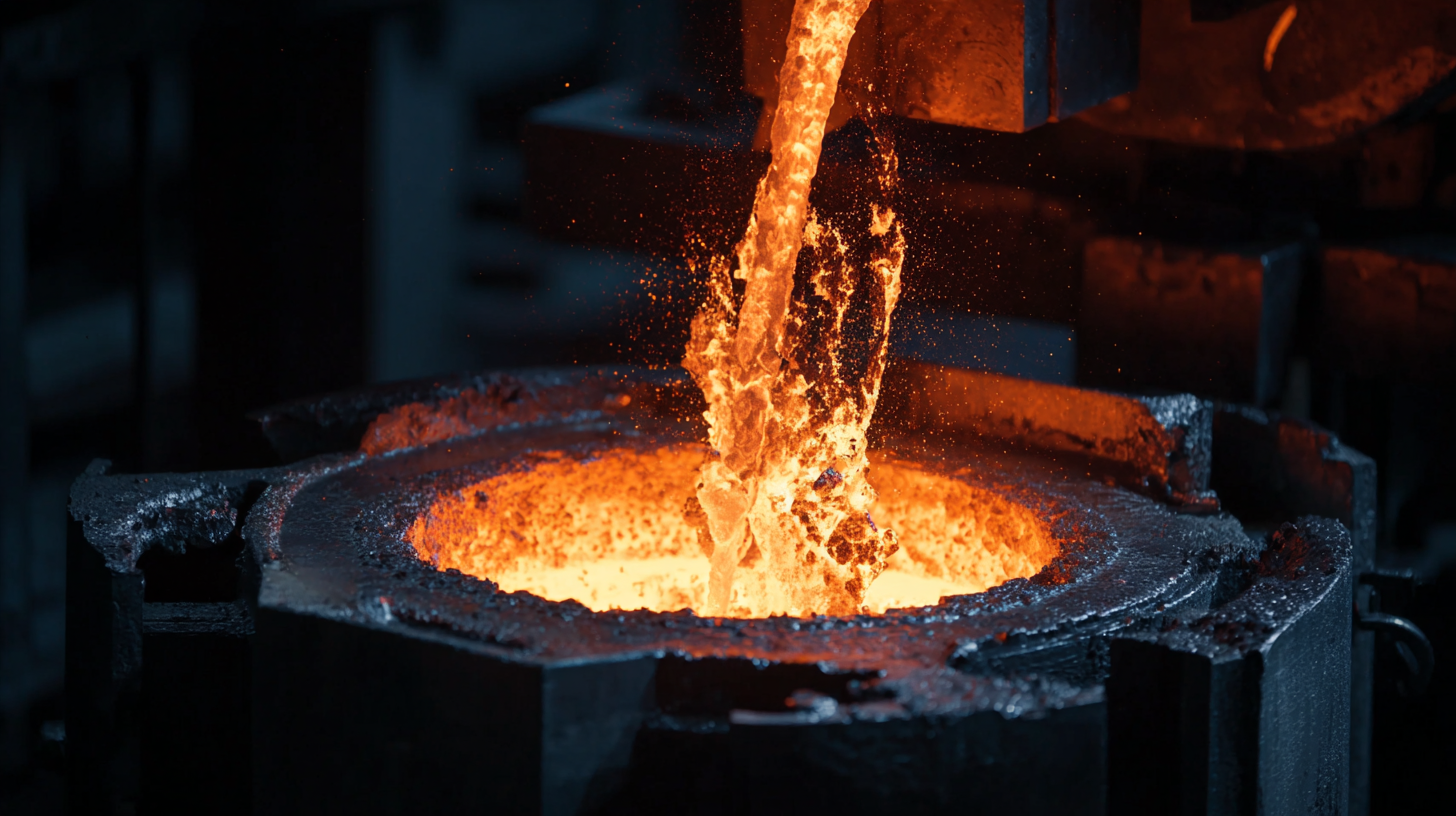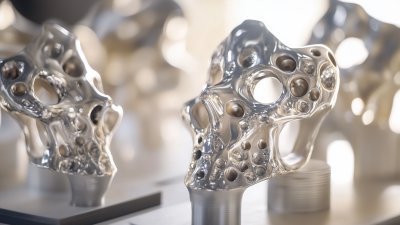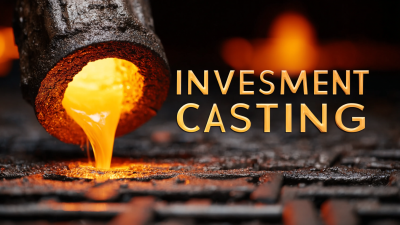The Investment Casting Process, renowned for its ability to produce intricate shapes with high precision, has become indispensable across various industries, including aerospace, automotive, and industrial sectors. According to a recent report by Market Research Future, the global investment casting market is projected to reach $6.9 billion by 2025, growing at a CAGR of 5.2%. This remarkable growth can be attributed to the increasing demand for lightweight and complex components that investment casting can provide.
Industry experts highlight the essential role of this process in manufacturing high-performance parts. Dr. John Smith, a leading authority on metal casting technologies, emphasizes, "The Investment Casting Process not only enhances design flexibility but also improves material efficiency, making it a preferred choice for critical applications." As industries evolve and the need for innovative solutions escalates, understanding the benefits and various applications of the Investment Casting Process will enable stakeholders to capitalize on its advantages and ensure competitive positioning in the market.
In our exploration of the Investment Casting Process, we will delve into its key benefits, technology advancements, and diverse applications across different sectors, showcasing why it remains a pivotal manufacturing technique in today's economy.

 Investment casting, also known as lost-wax casting, is a refined manufacturing process that allows for the production of intricate metal components with exceptional precision. The process begins with creating a wax pattern, which is then coated in a ceramic shell. Once hardened, the shell is heated, melting away the wax and leaving a hollow mold ready for metal pouring. This method is highly favored for its ability to create complex shapes that traditional casting cannot achieve, making it invaluable across various industries including aerospace, automotive, and medical sectors.
Investment casting, also known as lost-wax casting, is a refined manufacturing process that allows for the production of intricate metal components with exceptional precision. The process begins with creating a wax pattern, which is then coated in a ceramic shell. Once hardened, the shell is heated, melting away the wax and leaving a hollow mold ready for metal pouring. This method is highly favored for its ability to create complex shapes that traditional casting cannot achieve, making it invaluable across various industries including aerospace, automotive, and medical sectors.
Tips for Successful Investment Casting: To optimize your investment casting process, consider investing in high-quality patterns and molds, as this will significantly enhance the final product’s precision. Additionally, maintaining strict temperature controls during metal pouring is crucial to avoid defects and ensure uniformity in the castings. Lastly, conducting thorough inspections and quality checks throughout the process can mitigate potential issues before they escalate.
Understanding the basic principles of investment casting not only empowers manufacturers to streamline production but also opens doors to innovative applications. Its adaptability allows for the use of different alloys and configurations, making it a versatile option for specialized components that require thorough attention to detail and consistency. As industries evolve, investment casting continues to be a key technique in driving technological advancements and meeting the rising demands for precision-engineered products.
Investment casting, often referred to as precision casting, offers several key advantages that make it an optimal choice for various industrial applications. One of the primary benefits is its ability to produce complex geometries with exceptional accuracy. According to a report by Grand View Research, the global market for investment casting is expected to reach USD 20.2 billion by 2025, underscoring a growing demand for precision-engineered components across sectors such as aerospace, automotive, and medical devices.
Another advantage is the superior surface finish that investment casting can achieve, minimizing the need for further machining and thus reducing overall production costs. A study by Research and Markets highlights that parts produced through investment casting can have a surface finish comparable to that of parts that have undergone extensive machining. This not only streamlines the manufacturing process but also enhances the longevity and performance of the final products, particularly in high-stress environments like aerospace engines and surgical implants. Furthermore, investment casting allows for greater material flexibility, enabling manufacturers to utilize a wide range of alloys, which contributes to improved performance characteristics and customizability in design.
Investment casting, known for its precision and versatility, serves a wide array of industries, making it a preferred manufacturing method for complex geometries. In the aerospace sector, investment casting is crucial for producing lightweight yet durable components, such as turbine blades and structural parts. These components must withstand extreme temperatures and stress, and investment casting allows for surface finishes and tolerances that reduce the need for additional machining.

In the automotive industry, investment casting contributes significantly to creating components like engine blocks, gearbox housings, and intricate brackets. The process facilitates the manufacture of parts with integrated features, which not only saves assembly time but also improves overall performance and reliability. Additionally, investment casting is employed in the medical field, where the production of custom implants and surgical instruments requires both high precision and biocompatibility. This adaptability underscores investment casting’s importance across diverse sectors, showcasing its ability to meet specific engineering requirements while optimizing material use and production efficiency.
Investment casting, also known as precision casting, is a highly sophisticated manufacturing process that enables the creation of complex metal parts with exceptional surface finishes. The procedure begins with creating a wax pattern that is an exact replica of the desired final component. Once the pattern is formed, it is coated with a ceramic shell, which is subsequently heated to remove the wax, leaving a hollow ceramic mold ready for pouring molten metal. The steps generally include design verification, pattern creation, shell building, dewaxing, pouring, and finishing.
According to a report by the Investment Casting Institute, the investment casting market is projected to reach over $25 billion by 2027, driven largely by its applications in aerospace, automotive, and medical equipment manufacturing. The precision of investment casting allows for tight tolerances, often within +/- 0.005 inches, which is critical in high-stakes industries such as aerospace where component reliability is paramount. Additionally, the ability to cast intricate geometries means that investment casting can significantly reduce the number of machining processes needed, thus saving both time and costs during production.
| Aspect | Description |
|---|---|
| Process Steps | Wax pattern creation, mold preparation, pouring, cooling, finishing. |
| Materials Used | Various metals including aluminum, steel, and gold. |
| Benefits | High precision, intricate designs, reduced waste, and good surface finish. |
| Industry Applications | Aerospace, automotive, medical devices, and industrial machinery. |
| Cost Efficiency | Ideal for small to medium production runs due to setup costs. |
| Environmental Impact | Lower scrap rates compared to other casting processes. |
| Quality Assurance | Usually includes non-destructive testing and stringent quality checks. |
Investment casting, while advantageous for producing complex shapes and high-quality components, faces several common challenges that can impact its efficiency and product integrity. One significant challenge is achieving dimensional accuracy, as fluctuations in the mold material or process parameters can lead to variations in the final product. To mitigate this, manufacturers can utilize advanced computer modeling and precision machining techniques to ensure molds are created with high precision and consistency.
Another challenge involves material selection and compatibility, which is crucial for achieving desired mechanical properties in the final cast. Different alloys may behave unpredictably during the casting process, leading to defects such as porosity or inclusions. To overcome this, thorough material testing and simulation can be implemented, allowing for better understanding and control of the casting environment and resulting in enhanced material performance. By addressing these challenges through improved technology and rigorous testing protocols, the investment casting process can achieve higher quality standards and meet industry-specific requirements effectively.










